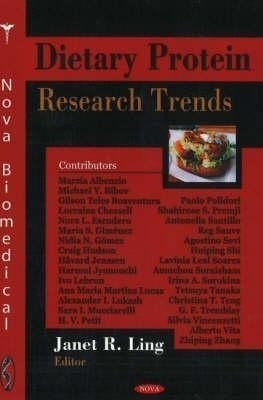Dietary Protein Research Trends(English, Hardcover, unknown)
Quick Overview
Product Price Comparison
Proteins are made of strings of amino acids that form chains known as peptides. Our bodies need dietary protein to accomplish many basic functions, such as building bones, moving muscles, and repairing tissue. Dietary protein, an essential nutrient, comes from meat, dairy, and certain grains and beans. Proteins differ by the types and order of amino acids they contain. Even though there are only 20 amino acids, they create almost endless variations in chains as long as 500 links. Proteins form inside animals (including humans) and plants through processes that synthesize peptides. For humans, we cannot synthesise certain "essential protein," and so we must ingest them through food. These essential proteins are made of phenylalanine, threonine, methionine, tryptophan, leucine, isoleucine, lysine, and valine amino acids. Food from plants, like corn, have incomplete protein, which means they do not contain all the necessary amino acids. Only food from animals, such as cheese and fish, provide complete protein, and don't need to be combined with other protein sources. Examples of complete protein foods are milk, cheese, yogurt, butter, poultry, pork, or any meat. Incomplete proteins include oats, wheat, pasta, lentils, nuts, rice, soy, pears, and seeds. Eating a combination of complementary protein sources, such as grains mixed with legumes, results in a diet of essential protein. This is how vegetarians and vegans maintain health without eating meat or dairy. This book presents the latest research in this dynamic field.


